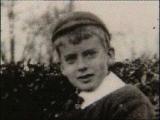 John Logie Baird is often credited with the invention of television, though in reality it was the culmination of various independent discoveries. However Baird was responsible for bringing various elements together and promoting the idea of television commercially to such an extent that it became a reality.
John Logie Baird is often credited with the invention of television, though in reality it was the culmination of various independent discoveries. However Baird was responsible for bringing various elements together and promoting the idea of television commercially to such an extent that it became a reality.
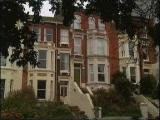 Baird, although a Scot, had lived in London for much of his life. And he had also suffered from ill health for most of his life as well, so on the advice of his doctor he moved to the South Coast of England to live in the seaside resort of Hastings. Against medical advice, he carried on developing his ideas for various inventions both large and small, including the one that interested him the most – television.
Baird, although a Scot, had lived in London for much of his life. And he had also suffered from ill health for most of his life as well, so on the advice of his doctor he moved to the South Coast of England to live in the seaside resort of Hastings. Against medical advice, he carried on developing his ideas for various inventions both large and small, including the one that interested him the most – television.
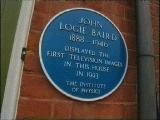 Lynton Crescent was to be the place where Baird managed to finally realise his dream; that of the transmission of an image without the use of wires or any form of trickery. He had been following the various attempts made by other people to transmit pictures with great interest, and very soon he was to attempt to do the same as well.
Lynton Crescent was to be the place where Baird managed to finally realise his dream; that of the transmission of an image without the use of wires or any form of trickery. He had been following the various attempts made by other people to transmit pictures with great interest, and very soon he was to attempt to do the same as well.
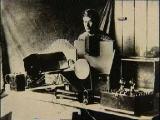 He built his pioneering equipment using what odds and ends he could lay his hands on, such as an old tea chest, an old bicycle lamp, cardboard from a hat box, an old biscuit tin, darning needles, string and tallow wax. With this he managed to construct a mechanical scanning system for the transmission and reception of images – he received help from local people in order to fund the experiment.
He built his pioneering equipment using what odds and ends he could lay his hands on, such as an old tea chest, an old bicycle lamp, cardboard from a hat box, an old biscuit tin, darning needles, string and tallow wax. With this he managed to construct a mechanical scanning system for the transmission and reception of images – he received help from local people in order to fund the experiment.
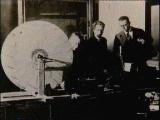 By the end of 1923 John Logie Baird, through sheer determination had finally managed to build what was effectively the world’s first complete television transmitter and receiver. Its achievements may today look relatively modest but by the standards of the day it was a technical miracle – the speed of both the transmitter and receiver had to be perfectly synchronised in tandem for an image to be viewable.
By the end of 1923 John Logie Baird, through sheer determination had finally managed to build what was effectively the world’s first complete television transmitter and receiver. Its achievements may today look relatively modest but by the standards of the day it was a technical miracle – the speed of both the transmitter and receiver had to be perfectly synchronised in tandem for an image to be viewable.
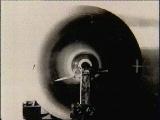 The very first transmitted image was that of a simple cross made of cardboard (visible on the right hand side of the picture); the camera and transmitter were a few feet away on the other side of the room. In January 1924 the Daily News reported on this feat, and public interest rapidly grew as a result of this successful experiment. Mr. Twigg the landlord was rather less impressed though – since Baird had electrocuted himself twice and caused a small explosion, he evicted Baird from his lodgings. The first chapter of television history had effectively drawn to a close.
The very first transmitted image was that of a simple cross made of cardboard (visible on the right hand side of the picture); the camera and transmitter were a few feet away on the other side of the room. In January 1924 the Daily News reported on this feat, and public interest rapidly grew as a result of this successful experiment. Mr. Twigg the landlord was rather less impressed though – since Baird had electrocuted himself twice and caused a small explosion, he evicted Baird from his lodgings. The first chapter of television history had effectively drawn to a close.